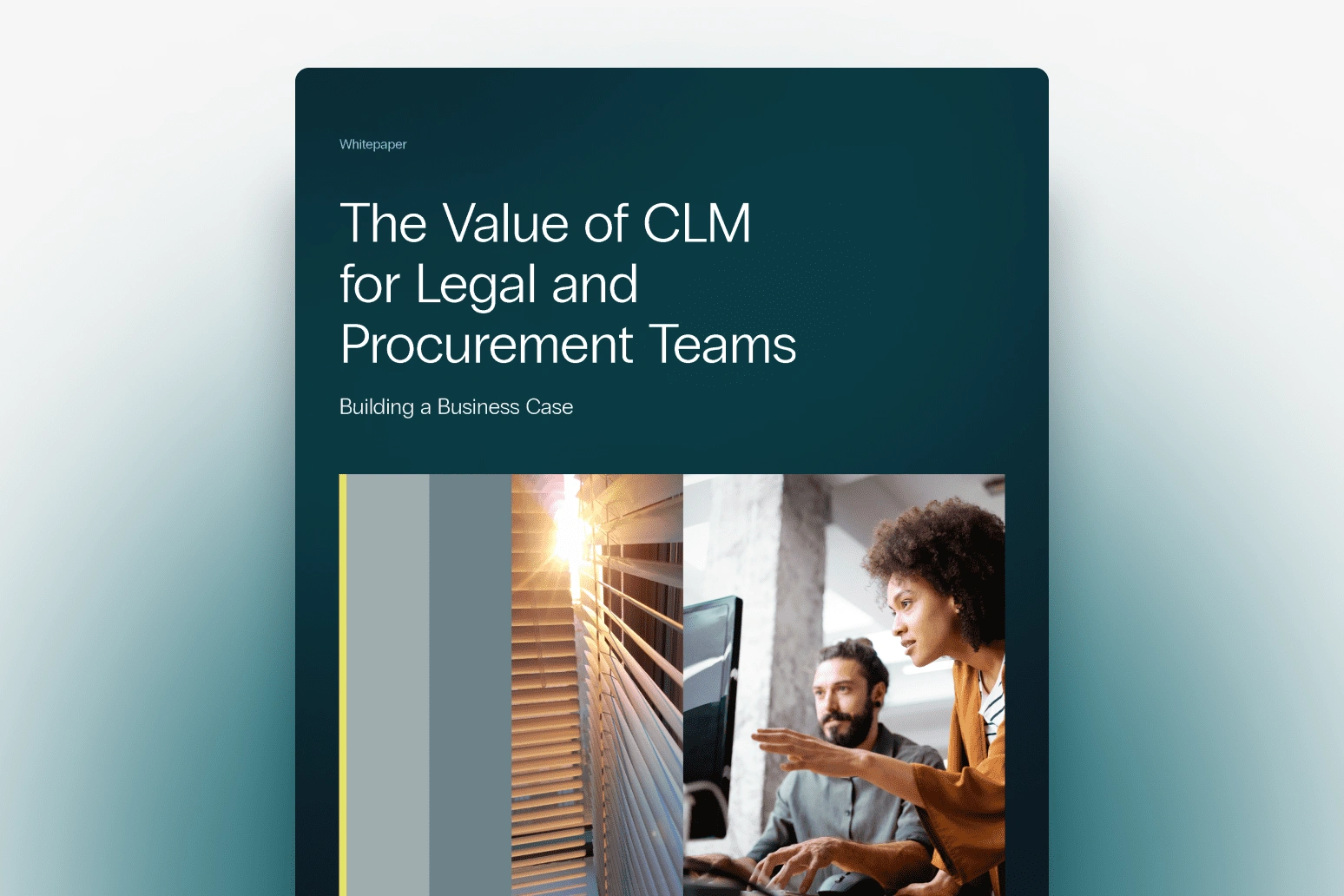Mastering CLM in Procurement: SAP Integration Strategies That Drive Value

- Oct 29, 2025
- 15 min read
- Sirion
CLM full form in procurement is more than an acronym – it signals a shift toward intelligent, SAP-connected contracting that eliminates manual bottlenecks.
What Does CLM Mean in Modern Procurement?
CLM stands for Contract Lifecycle Management – the end-to-end process that transforms how procurement teams handle contracts. Rather than treating contracts as static documents, modern CLM represents a strategic necessity that turns contracts into dynamic sources of commercial intelligence.
The true power of CLM emerges when it connects seamlessly to core enterprise systems. Sirion’s AI-powered platform transforms procurement by automating contract management processes, enabling teams to move beyond manual workflows. Organizations implementing this approach report significant improvements, with 42% now using AI in their contracting processes – up from just 30% a year ago.
This evolution addresses critical procurement challenges. Contract value leakage represents a material drain on company margins, making intelligent CLM systems essential for protecting value. By centralizing contract data and automating obligation tracking, procurement teams can focus on strategic decisions rather than administrative tasks.
Why Align CLM With the SAP Landscape?
The SAP ecosystem powers procurement operations for thousands of enterprises globally. Integrating CLM with SAP transforms contract management from a siloed function into an enterprise-wide capability. Sirion integrates with SAP Ariba, S/4HANA, and CPQ, creating a unified contracting environment.
This alignment delivers measurable results. Organizations using integrated SAP-CLM workflows achieve 90% faster time-to-contract while reducing value leakage by approximately 20%. The integration ensures procurement teams can manage contracts without leaving their familiar ERP environment. As one executive noted: “By uniting Sirion’s AI-native, enterprise contracting capabilities with SAP’s industry-leading procurement solutions, we enable customers to unlock the full potential of their buy-side relationships.”
Key SAP Touchpoints for CLM
Modern CLM platforms connect with multiple SAP modules to create comprehensive procurement workflows. The Sirion CLM Sell-Side Adapter for SAP CPQ supercharges sales and contracting workflows by instantly converting quotes into contract requests.
Core integration points include automated contract requests that eliminate manual data entry, real-time synchronization ensuring data consistency across quotes and contract terms, and accelerated sales cycles that reduce turnaround time. Sirion’s AI agents for extraction, redline, and issue detection enable procurement professionals to accelerate time to contract while mitigating risks.
The real-time data synchronization between the platform and SAP Ariba ensures that contract data remains accurate and up-to-date across all systems. This eliminates the data discrepancies that often plague disconnected procurement processes.
Architecture Choices: APIs, Connectors, or iPaaS?
Selecting the right integration architecture determines the success of your CLM-SAP implementation. APIs act as documented messengers allowing different software applications to communicate and exchange data securely and efficiently.
Each integration approach carries different risk profiles and benefits. Native or pre-built connectors offer ready-made connections for popular systems like SAP, providing faster deployment but potentially less flexibility. Integration Platform as a Service (iPaaS) solutions act as central hubs to manage complex integrations between multiple systems, ideal for organizations with diverse technology stacks.
However, integration complexity brings risks. 77% of cybersecurity incidents in 2024 involved APIs, highlighting the critical need for secure integration practices.
Guarding Against API-Driven Risk
API security must be a primary consideration when connecting CLM and SAP systems. Organizations face up to 9% value leakage across obligation management and compliance cost savings, representing billions of dollars left on the table annually due to poor integration management.
Protecting against these risks requires comprehensive security measures. 77% of cybersecurity incidents involving APIs demonstrates the vulnerability of poorly secured integration points. Organizations must implement secure API management protocols, including authentication, encryption, and rate limiting.
Regular security audits and monitoring help identify vulnerabilities before they become breaches. Organizations face significant value leakage when integration security fails, making proactive risk management essential for protecting contract value.
Seven Best Practices for Seamless SAP-CLM Integration
A successful SAP-CLM integration depends on combining strategic planning, governance, and change management with robust technical execution.
Below are the five most critical best practices for procurement teams:
- Align Integration with Procurement Objectives
Map integration goals to measurable business outcomes — faster sourcing cycles, improved supplier compliance, and reduced contract leakage. Avoid connecting every system at once; prioritize integrations that directly impact contract performance. - Design a Unified Data Model
Establish master data consistency between SAP and CLM systems. Standardized taxonomies for supplier names, contract types, and spend categories ensure that automated workflows remain accurate and audit-ready. - Secure the Integration Layer
With over three-quarters of API incidents linked to misconfiguration, security must be designed from the start. Implement API authentication, data encryption, and continuous monitoring to safeguard sensitive supplier and pricing data. - Invest in Change Management and Training
Technology adoption succeeds only when users understand its value. Conduct hands-on training for procurement, legal, and IT teams to ensure smooth adoption and proper governance of AI-driven workflows. - Measure and Optimize Post Go-Live
Track integration success through metrics like cycle-time reduction, obligation fulfillment, and contract renewal rates. Use real-time dashboards to identify bottlenecks and continuously fine-tune processes for higher ROI.
When executed well, these best practices enable procurement teams to unlock the full power of SAP-CLM integration — turning contracting into a real-time intelligence function rather than a back-office task.
How to Measure Success After Go-Live
Measuring integration success requires tracking both operational and financial metrics. Leading organizations achieve 90% faster time-to-contract through SAP-integrated CLM, demonstrating the transformative potential of well-executed integration.
Key performance indicators include procurement cycle time reduction, with 65% reduction achievable through optimized workflows. Financial metrics prove equally compelling, with organizations reporting $2.3M annual savings from improved supplier terms visibility.
Contract intelligence capabilities unlock hidden value. Automated contract requests instantly convert SAP CPQ quotes into contract requests within CLM systems, eliminating manual data entry and accelerating processing times. These efficiency gains compound over time, creating sustainable competitive advantages.
Evaluating CLM Vendors for SAP-Centric Procurement
Selecting a CLM platform for SAP integration isn’t just about functionality — it’s about fit, scalability, and data integrity across the procurement value chain.
Here’s how procurement and IT leaders can evaluate vendors effectively:
- Integration Depth with SAP:
Assess whether the CLM solution offers pre-built connectors and certified APIs for SAP Ariba, S/4HANA, and CPQ. Deep integration ensures real-time synchronization between contract data, purchase orders, and supplier records — eliminating manual reconciliation. - AI-Powered Contract Intelligence:
Look for platforms that use machine learning and generative AI to extract key terms, detect compliance risks, and automate clause negotiation. This capability transforms SAP-linked contracts into continuous sources of insight rather than static files. - Scalability and Performance:
The ideal CLM platform should scale seamlessly as procurement volume grows, maintaining consistent performance and security standards across geographies and business units. - Governance and Auditability:
Ensure the solution maintains complete audit trails for every transaction and integrates with SAP’s role-based access controls to enforce data integrity and regulatory compliance. - Customer Proof and Recognition:
Analyst recognition and enterprise adoption matter. Sirion, for instance, manages over 5 million contracts across 70+ countries and has been recognized by Gartner for its end-to-end contract intelligence platform — a key differentiator for SAP-connected enterprises.
What Analysts Say
Industry analysts agree that ERP-integrated CLM is redefining enterprise procurement. The market has shifted decisively toward platforms that can connect contracts, suppliers, and spend data within the same ecosystem — with SAP at the center.
Gartner’s 2024 Magic Quadrant for Contract Lifecycle Management highlights a clear trend: vendors recognized as Leaders demonstrate advanced integration capabilities and AI-driven automation that directly reduce contracting cycle times. Sirion’s inclusion as a Leader reflects its strength in post-signature performance management and deep interoperability with SAP modules such as Ariba, S/4HANA, and CPQ.
IDC and Forrester similarly note that organizations investing in integrated CLM solutions experience measurable benefits — faster procurement cycles, better contract visibility, and higher compliance maturity. Analysts consistently recommend prioritizing vendors with proven SAP-certified integrations, strong data governance, and AI features that convert contracts into actionable commercial intelligence.
Charting the Future of SAP-Native Contracting
The future of procurement lies in intelligent, connected contracting systems that seamlessly integrate with SAP environments. Sirion’s solution reduces contract cycle times by up to 50%, demonstrating the transformative potential of modern CLM-SAP integration.
Sirion’s integration capabilities extend to non-native systems, allowing seamless data flow and process automation across platforms. This flexibility ensures organizations can build comprehensive procurement ecosystems that adapt to changing business needs.
As procurement continues its digital transformation, Sirion’s integration solutions are designed to enhance contract lifecycle management by connecting with various enterprise systems. Organizations that embrace this integrated approach position themselves to capture value, reduce risk, and accelerate procurement cycles in an increasingly competitive landscape.
For procurement teams ready to transform their contracting processes, the combination of CLM and SAP integration represents a strategic imperative. By following best practices, addressing security concerns proactively, and selecting vendors with proven integration capabilities, organizations can unlock the full potential of their procurement operations. Sirion’s deep SAP integration capabilities, combined with AI-powered contract intelligence, offer a clear path forward for enterprises seeking to modernize their procurement contracting.
Frequently Asked Questions (FAQs)
How does CLM integrate with SAP systems like Ariba, S/4HANA, and CPQ?
What security practices are essential for SAP-CLM integrations?
What are the top best practices for a successful SAP-CLM rollout?
How should we measure success after go-live?
Additional Resources

Procurement Contract Lifecycle Management: From Fragmentation to Integration

